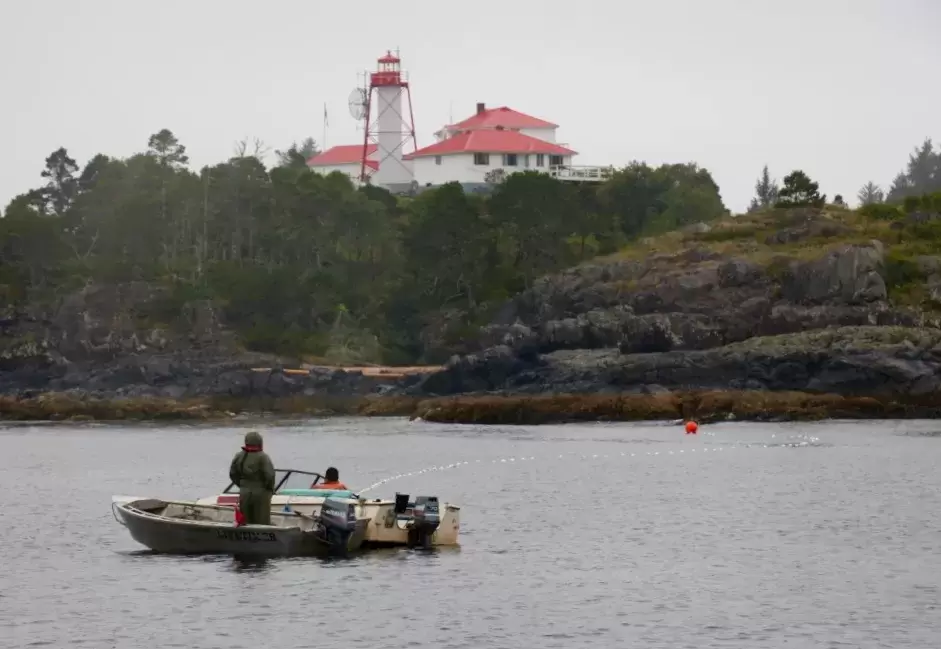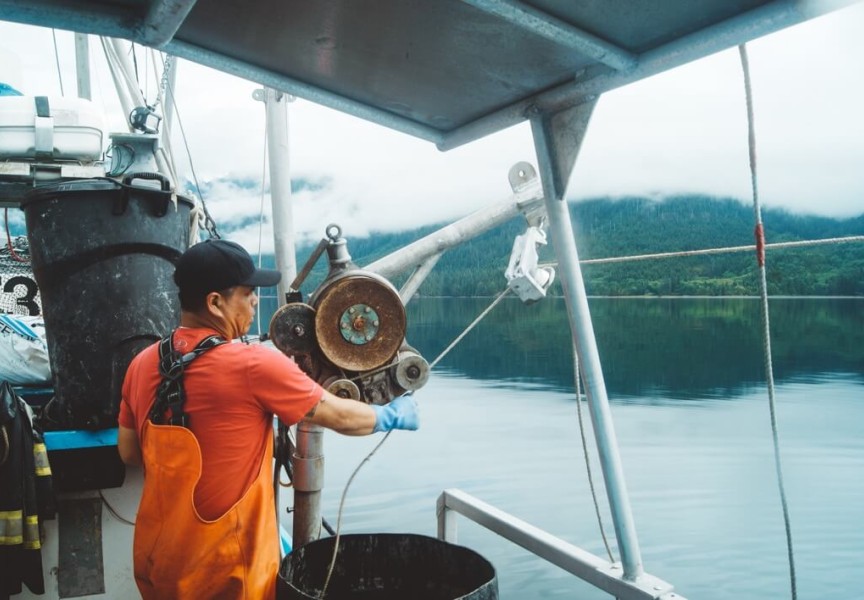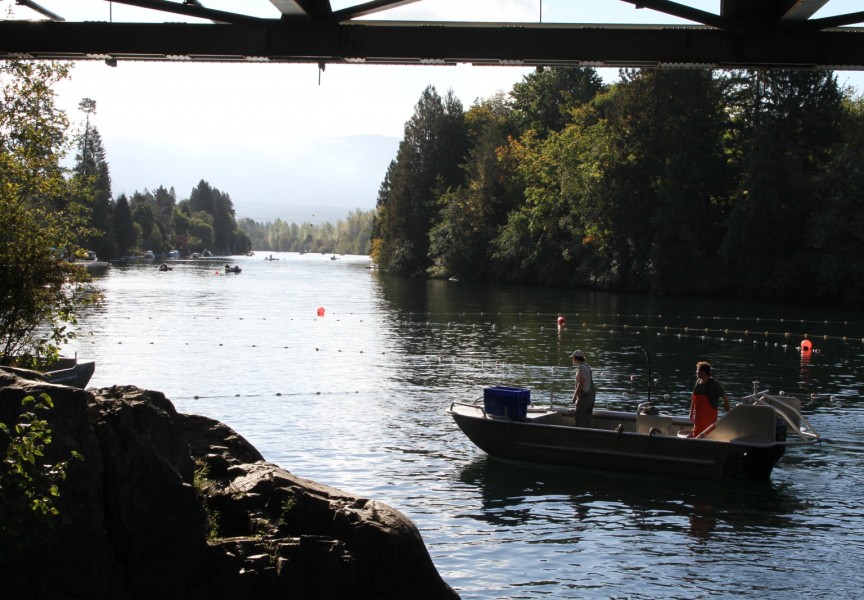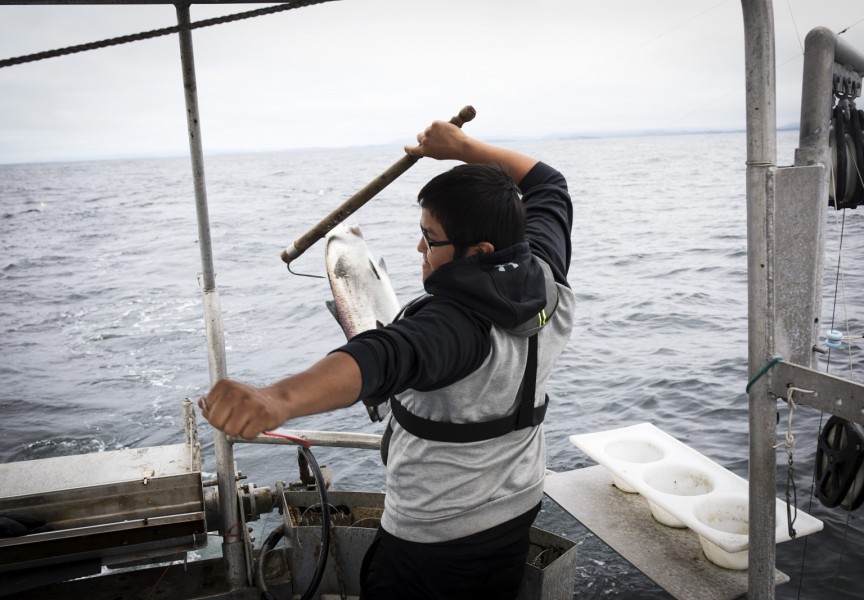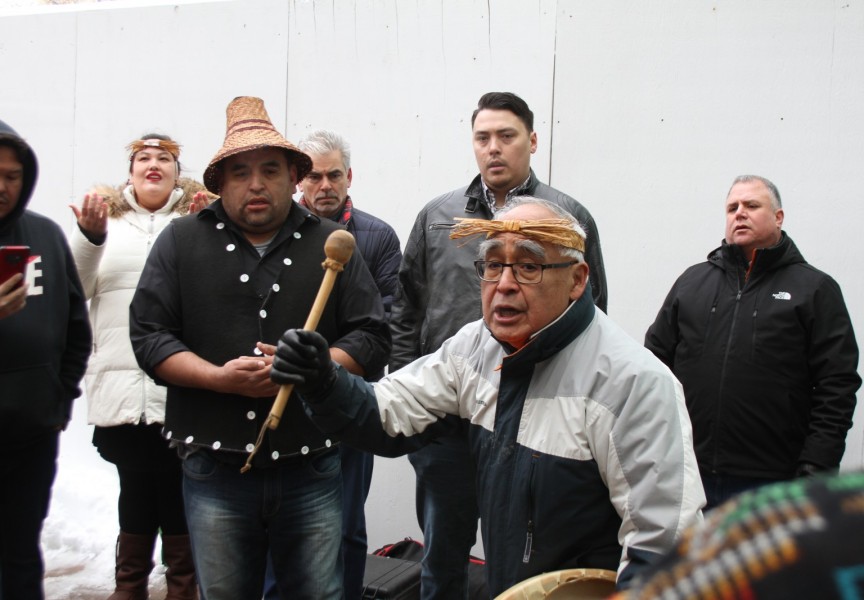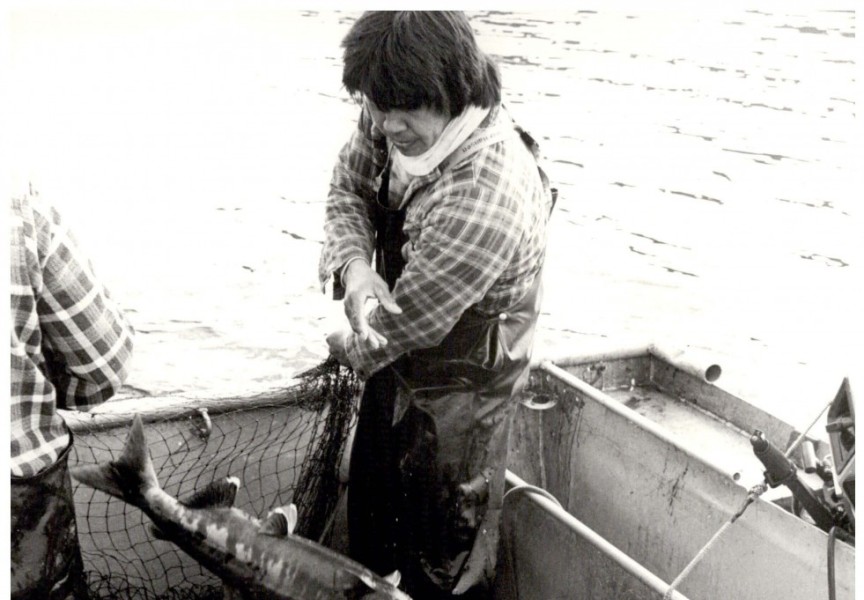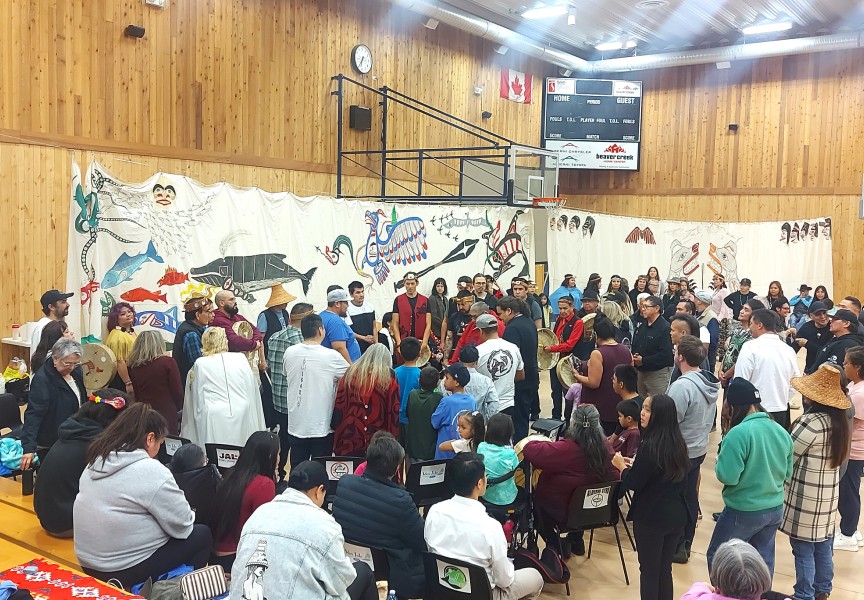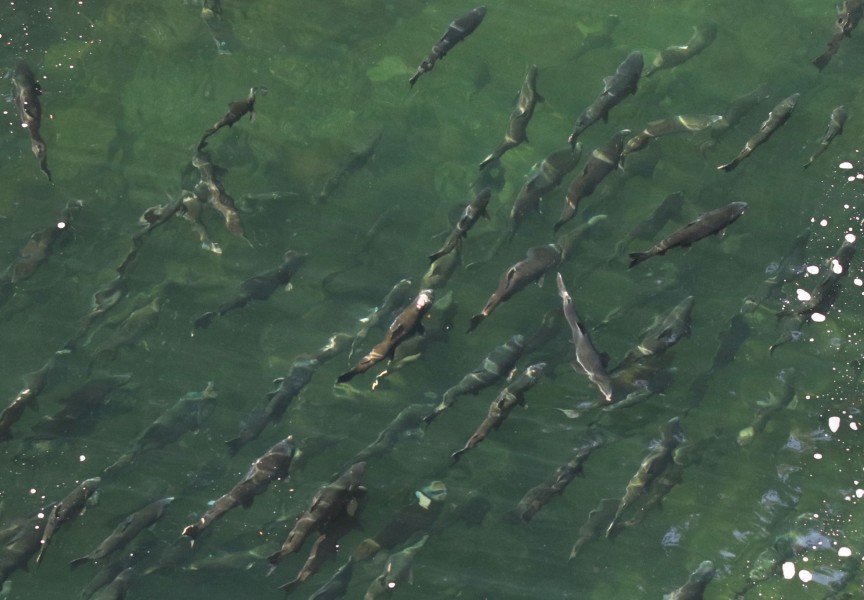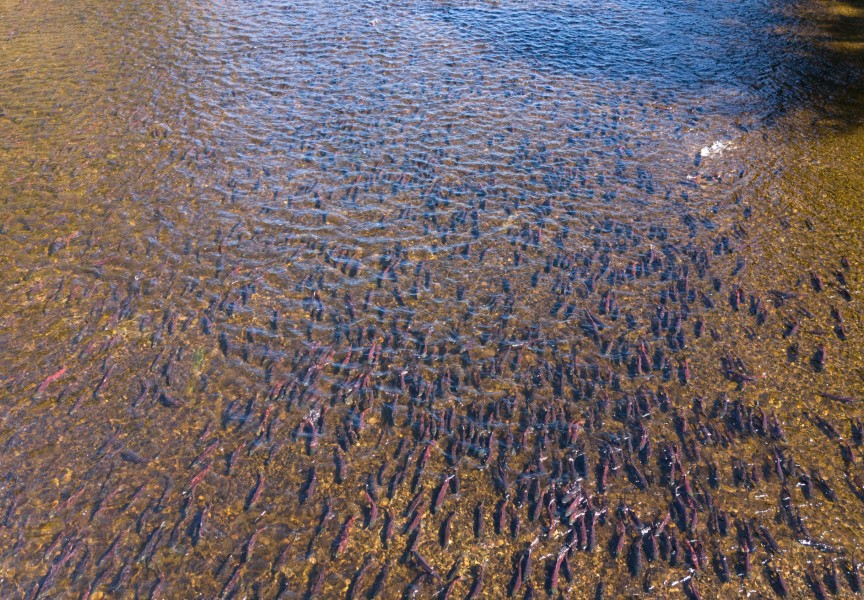A long and frustrating struggle to re-establish Aboriginal access to west coast fishery resources may finally bear fruit with an appeal decision expected in the T’aaq-wiihak rights saga.
T’aaq-wiihak fisheries represent the Aboriginal commercial right to fish by five Nuu-chah-nulth First Nations (Ahousaht, Ehattesaht/Chinehkint, Hesquiaht, Tla-o-qui-aht and Mowachaht/Muchalaht), rights confirmed by a 2009 B.C. Supreme Court decision.
T’aaq-wiihak’s seventh consecutive summer season included five fisheries, limited for the most part to chinook salmon and gooseneck barnacles. They are still classed as pilot or demonstration fisheries pending the outcome of a case before the B.C. Court of Appeal.
“The nations’ vision for these fisheries has not been realized yet,” said Alex Gagne, T’aaq-wiihak fisheries manager. “We’re still in that transition period.”
She is, however, optimistic about the court decision scheduled some time this fall.
Fishing, which opened May 24, was already limited by forecasts for a poor year for most salmon species. That was further restricted by low catch allocations and chinook conservation measures stemming from the Big Bar Slide on the Fraser River, Gagne said.
“That did make fishing a lot more challenging,” she said.
Three-quarters of T’aaq-wiihak nations’ chinook were harvested during a two-week opening in late July, she said.
Unlike last year, when there were three weeks’ worth of Fraser sockeye allocations, there was none this summer. There was, however, a consolation: a multi-species, hook-and-line finfish fishery for halibut, salmon and ling cod. Halibut catches were significant, though they don’t have final catch numbers yet, Gagne said.
A Muchalat Inlet suuhaa (chinook) fishery was held in Nootka Sound in August. Other fisheries included a Conuma River suuhaa chinook fishery in July and a ling cod fishery that opened Sept. 4. Openings for Clayoquot Sound sea cucumber and red urchin are scheduled for early October.
The court appeal hinges on how the presiding judges interpret Canada’s infringement on the Aboriginal fishing rights of the five T’aaq-wiihak First Nations. NTC has been an intervenor in the case.
“We’ve always been very confident in terms of proceeding with the appeal,” said Cliff Atleo, lead negotiator. “There were so many things wrong with this decision.”
Foremost among them was the judge’s characterization of Aboriginal fishing, which she described as a “small-scale, artisanal” fishery. The wording not only flies in the face of economic viability and First Nation aspirations for self-reliance, it is also seen as a potential setback for all First Nations pursuing recognition of Aboriginal rights.
“I, too, am optimistic about a positive decision on our behalf,” Atleo said.
How DFO interprets that decision remains to be seen, he added, describing past policies as racist.
“Government is generally opposed to Aboriginal participation,” Atleo said. “All of the government policies that were negative in the past have led us to where we are. We hope to be independent, self-sustaining communities.”
The T’aaq-wiihak main table gathers in Port Alberni on Sept. 18 in the Tseshaht Great Room.
Despite the delays, litigation and inadequate allocations, each year has brought improvements and greater revenues from T’aaq-wiihak fisheries, Gagne said.
Andy Webster, an Ahousaht fisherman, said he chose not to participate in the chinook fishery because of a requirement to release fish larger than 81 cm. Catching and releasing salmon taxes their ability to survive, he said.
“To me, it’s criminal shaking off smileys,” he said, using the nickname for large chinook salmon. “Too much mortality.”
Webster was thankful for several community food fisheries that helped fill the gap in his season.
“If it weren’t for the food fisheries, we’d be toast,” he said.
Brion Robinson, a sea cucumber fisherman who operates a commercial dive boat, took part in a mapping survey this summer in Nootka Sound and Esperanza Inlet. The mapping determined that sea-cucumber populations are sufficient to allow an expansion of the fishery in those areas in the next year or so. He plans to be part of the fishery in Clayoquot Sound in October.
“You do pretty well,” Anderson said. “It’s one of the best if not the best of T’aaq-wiihak fisheries.”

